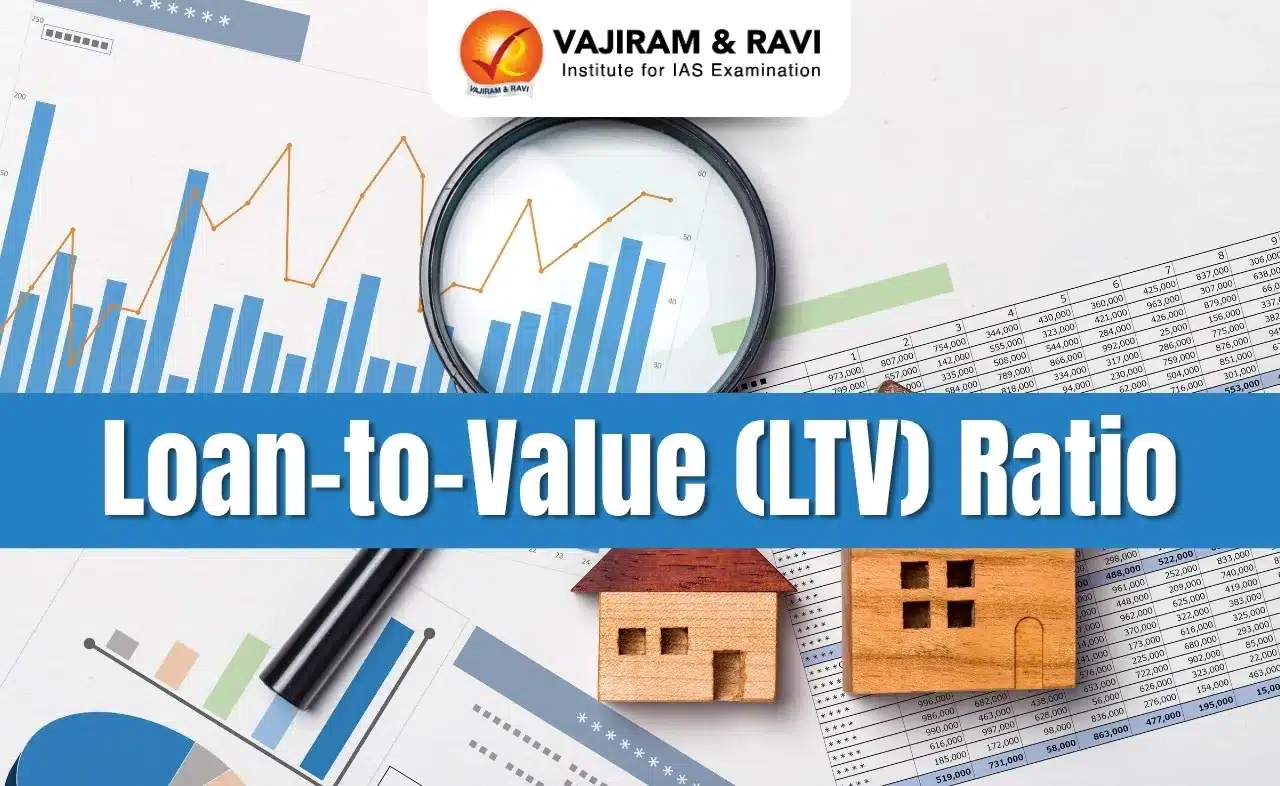Loan-to-Value (LTV) Ratio Latest News
Providing relief to small borrowers, the Reserve Bank of India (RBI) recently increased the loan-to-value (LTV) ratio for gold-backed loans up to ₹5 lakh.
About Loan-to-Value (LTV) Ratio
- LTV Ratio represents the proportion of an asset’s value that a lender is willing to provide debt financing against, usually expressed as a percentage.
- LTV is calculated by dividing the loan amount by the property’s appraised value or purchase price, whichever is lower.
- LTV Ratio = (Loan Amount/Appraised Property Value) x 100
- For example, if you are planning to purchase a property that is priced at ₹1 crore and the bank’s LTV is 70%, you will be eligible for a loan amount of ₹70 lakh.
- LTVs tend to be higher for assets that are considered more “desirable” as collateral.
- The desirability of an asset as collateral is generally measured by how stable its value is, how active its secondary market is, and how easily the title can be transferred to other parties (among other things).
- Typically, loan assessments with high LTV ratios are considered higher-risk loans. Therefore, if the loan is approved, it has a higher interest rate.
Recent RBI Changes to Loan-to-Value (LTV) Ratio for Gold-Backed Loans
- RBI has increased the LTV ratio from 75% to 85% for gold loans of up to Rs 2.5 lakh per borrower, including interest.
- In simple terms, if the pledged gold is worth Rs 1 lakh, borrowers can now get up to Rs 85,000 instead of the earlier Rs 75,000.
- For gold loans more than Rs 2.5 lakh and up to Rs 5 lakh, the LTV ratio has been set at 80 percent.
- For loans more than Rs 5 lakh, the central bank has set an LTV of 75 percent.
Loan-to-Value (LTV) Ratio FAQs
Q1: What does the Loan-to-Value (LTV) ratio primarily measure?
Ans: The proportion of the asset value financed through a loan.
Q2: Why are higher LTV ratios generally considered riskier for lenders?
Ans: Because they indicate less collateral buffer if the borrower defaults.
Q3: How is the LTV ratio calculated?
Ans: (Loan Amount ÷ Property Value or Purchase Price, whichever is lower) × 100
Source: BS
Last updated on January, 2026
→ Check out the latest UPSC Syllabus 2026 here.
→ Join Vajiram & Ravi’s Interview Guidance Programme for expert help to crack your final UPSC stage.
→ UPSC Mains Result 2025 is now out.
→ UPSC Notification 2026 is scheduled to be released on January 14, 2026.
→ UPSC Calendar 2026 is released on 15th May, 2025.
→ UPSC Prelims 2026 will be conducted on 24th May, 2026 & UPSC Mains 2026 will be conducted on 21st August 2026.
→ The UPSC Selection Process is of 3 stages-Prelims, Mains and Interview.
→ UPSC Result 2024 is released with latest UPSC Marksheet 2024. Check Now!
→ UPSC Toppers List 2024 is released now. Shakti Dubey is UPSC AIR 1 2024 Topper.
→ Also check Best IAS Coaching in Delhi
Tags: loan-to-value (ltv) ratio prelims pointers upsc current affairs upsc prelims current affairs

















